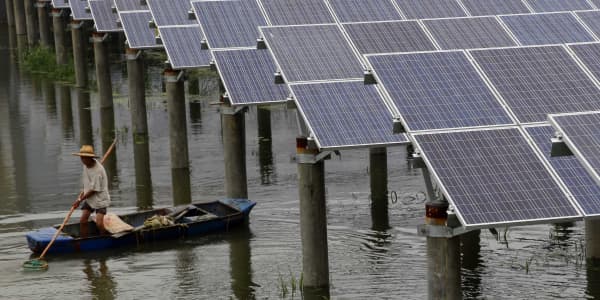Welcome to the age of the Asian consumer: an era in which an increasingly affluent and growing middle class transforms manufacturing and infrastructure in Asia with huge ramifications for the global economy.
To take advantage of growing consumer wealth and tap demand for luxury goods, global brands such as Prada have expanded in Asia, the biggest contributor to world economic growth over the past decade.
But the consumer story that has developed in recent years will play out over coming decades and will be reflected not just in retail, but increasingly in travel, a change in the manufacturing base and infrastructure as well, analysts said.
Read MoreHow mobile money is changing Asia
"The rise of the Asian consumer is a major factor in the world economy -- you can see it in terms of luxury goods, travel, the resorts that you see, their occupancy, and airports," says Quincy Krosby, a market strategist at Prudential Financial, based in Newark, New Jersey.
"The entire infrastructure for the consumer is growing throughout Asia," she adds.
Airports in Malaysia, South Korea, Singapore and India for instance are all adding or expanding existing terminals to meet growing demand. The air passenger handling capacity at Singapore's Changi, Southeast Asia's biggest international airport, is expected to double by the mid-2020s.
Read MoreEurope, Asia dominate the world's best airports
"We have tremendous tourist potential here not just in Manila but elsewhere," Tony Fernandes, the CEO of low-cost carrier AirAsia told CNBC at last month's World Economic Forum in the Philippines' capital city. "The Philippines is aware they have to create the infrastructure to support the consumption that is going on."
Changing times
The Asian Development Bank expects Asia to nearly double its share of global gross domestic product (GDP) to 51 percent by 2050 from 27 percent in 2010. It says that per capita income in the region could rise six-fold to reach the global average, potentially making an additional three billion Asians affluent by current standards.
According to the OECD meanwhile, Asia will represent 66 percent of the global middle-class population and 59 percent of middle-class consumption by 2030, compared to 28 percent and 23 percent, respectively in 2009.
Read MoreWill nationalism undo Asia's economic success?
And consumption as a proportion of GDP in some of Asia's big economies remains relatively low and that means the potential impact on economic growth has yet to be fully felt, economists say.
In China, the world's most populous nation and its second largest economy, household spending as a percent of GDP is roughly 36 percent, according to government estimates. That compares with 69 percent of GDP in the U.S.
"The CEO of every branded consumer product company knows one thing: he must have a leading market position in Asia," said John Rutledge, chief investment strategist at Safanad in California.

"In the coming years, Asia will increasingly replace North America and Europe as the key market in the world for branded consumer goods. In this decade, China's GDP will exceed U.S. GDP to become number one in the world and Asia's GDP will exceed that of the U.S. and EU [European Union]," he said.
Manufacturing hub
Rising consumer wealth means that manufacturing in Asia – for decades the world's factory for producing anything from shoes, toys and cars – is likely to move up the value-added chain, economists said.
"Japan went through the same process post-war – it used to manufacture low-end products and that's not the case now. It's an evolution, you see China slowing its economy to become a consumer economy and one that moves up the value chain and this will happen across Asia," said Prudential's Krosby.
"So manufacturing won't leave Asia, but the type of manufacturing will change with the evolution to a consumer-based, service-sector economy," she added.
Sidney Huang, the CFO of Chinese e-commerce firm JD.com that recently listed its shares in New York expects big opportunities from the growth of consumption in China.
Read MoreJD.Com shares soar nearly 10% in market debut
"Historically we've been more of a manufacturing-driven economy, but now it's about time that consumers will spend more money," he told CNBC last month. "And also because of the online/offline dynamic there are huge opportunities for online commerce."
While the rise of the Asian consumer is already happening, the key point is that the trend will broaden out in the years ahead, said Krosby at Prudential.
"It will happen over a generation and it will be powerful because it adds to global growth," she said.





